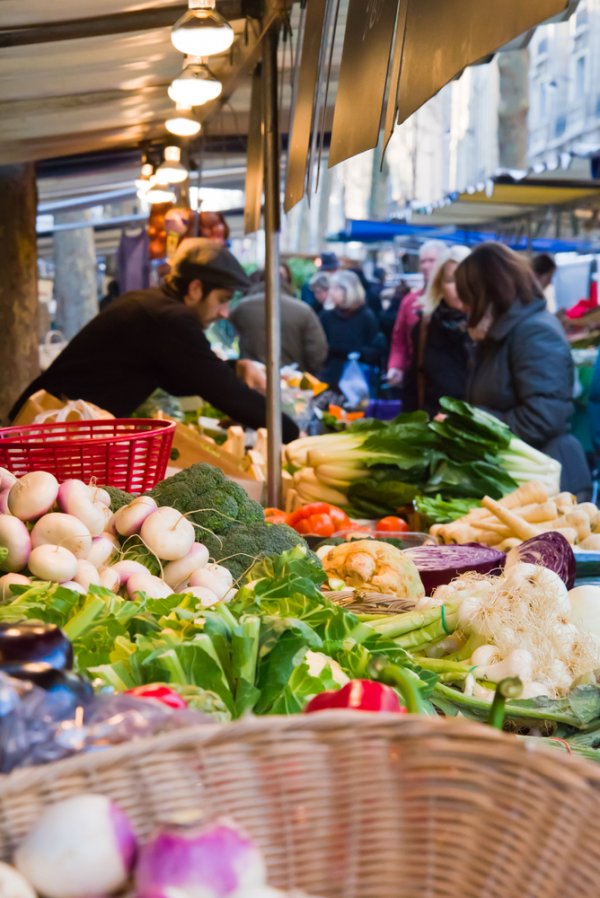Food and Drink: National Cuisine
French cooking has influenced the cuisine of the rest of Europe, the Americas, and parts of Asia and Africa to a remarkable degree. Although numerous dishes can simply be considered French standards, many ingredients and recipes are strongly regional. For instance, cooking oils and techniques for thickening sauces are often regional. In the south, oil, especially olive oil, is common, and goose or pork fat is sometimes used to make particular dishes. In the north, butter is far more common, but lard or bacon fat is also used for specific dishes.
Meats of all kinds are used in main courses and appetizers, as well as for flavorings in soups, stews, and savory tarts. Beef, pork, chicken, lamb and mutton, fish and shellfish, game, and meats less well-known in other countries, such as snail and frog, are all standard in France. Bacon and ham are particularly common as seasonings in meat and vegetable dishes. Preparation techniques vary from simply roasted chicken or leg of lamb and grilled steak, to multi-ingredient stews, to elaborately sauced and garnished dishes.
Wheat-based bread and potatoes are the everyday staples, although noodles are more common in the eastern and southeastern part of the country. Almost every region of France has its own cheese or cheeses, which are consumed on their own with wine as appetizers or after meals, or used as ingredients in savory tarts, soufflés, and potato and egg dishes. Cream and crème fraîche, a slightly soured and thickened cream, are popular ingredients in savory sauces, tarts, soups, and sweets.
Vegetables are widely consumed in salads, stews, and meat dishes. Popular vegetables vary by both region and season. Carrots and potatoes are extremely common in the north, while tomatoes, peppers, and eggplant are more popular in the south. Vegetables such as sorrel, asparagus, and young peas are consumed in season. Fruit is also common as an ingredient, depending on both the region and the season. Many apple-based specialties come from Brittany, Normandy, and Sologne, for example. Cherries, strawberries, plums, peaches, apricots, grapes, and pears are other common seasonal fruits.
Though France has an important tradition of rich, complex cakes and pastries, desserts can be simple. Simpler homemade confections include a baked fruit flan called clafoutis, a simple custard called crème brûlée, and plain butter cakes. Elaborate confections are usually purchased from professional bakers, and it is common to end a festive meal with a bakery cake such as a mille crêpe (thousand crepe cake) or croquembouche, a pyramid of caramel-dipped cream puffs.
Wine and liqueurs are an important part of French cooking as well as French dining. Wine is an ingredient in many of the country’s standard dishes, and most typical French foods have a particular type of wine that is supposed to best accompany them. Alcohols and liqueurs, often local products, are also regularly used as ingredients in sweet and savory dishes.
Copyright © 1993—2024 World Trade Press. All rights reserved.

 France
France 


